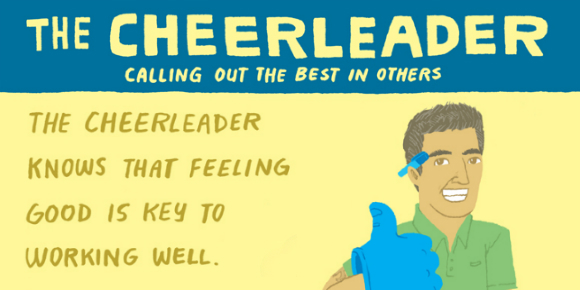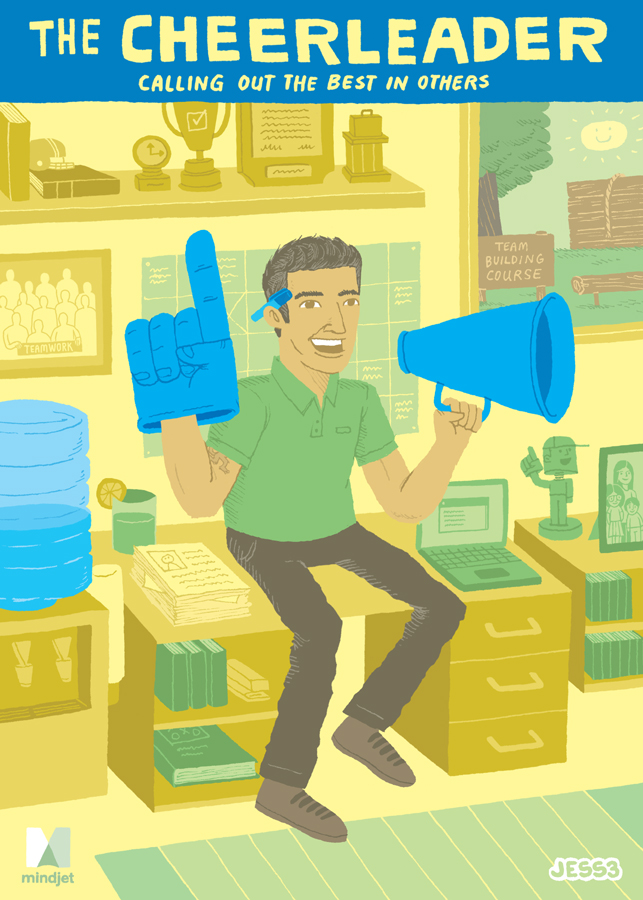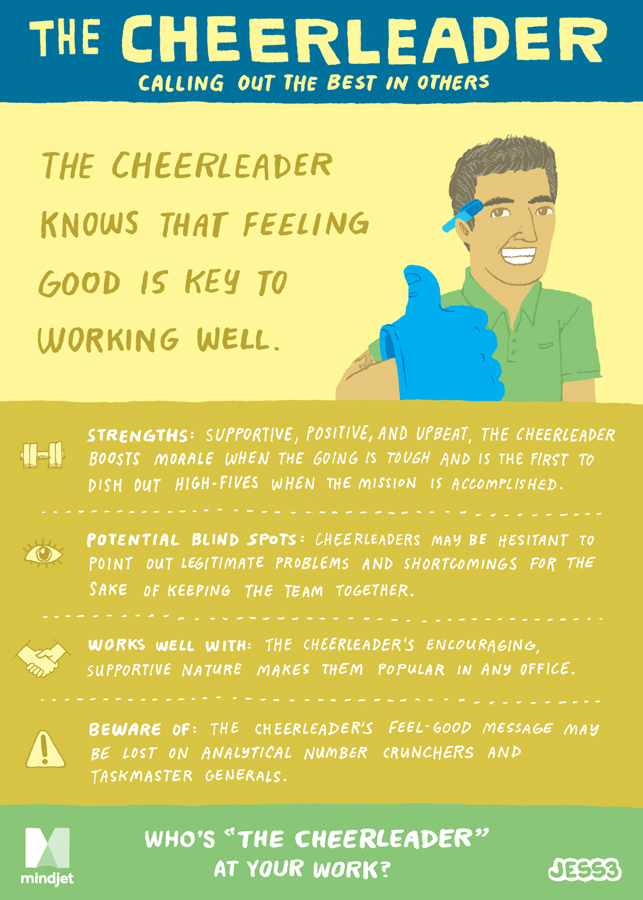Making the most of your work day can be a challenge. Mindjet’s Workology series will help you work smarter and more effectively with your workmates by introducing you to – and providing keys to working with – some common personality types found in any office.
When you think of a cheerleader, you likely picture a gaggle of girls, pom-pons in tow, rooting for the home team. But Cheerleaders are actually much more than that. In fact, having a Cheerleader on your team is essential to keeping team members happy and productivity high.
If you’re looking for a Cheerleader, just look for the crowd. Cheerleaders are quintessentially social, says Christine Damrose-Mahlmann, Myers-Briggs Type Indicator expert. Because they’re ESFPs (Extraverted Sensing Feeling Perceiving), “Human contact is a necessity.” Cheerleaders love people, and their “sensing” characteristic puts a premium on making sure that everyone’s voice is heard. ESFPs also thrive in dynamic environments and versatile jobs. “They love trying out new concepts and ideas, and show a lot of creativity,” says Damrose-Mahlmann.
They also thrive in change, which is why they’re considered Teamworkers, according to the Belbin Self-Perception Inventory, which organizes individuals into team roles based on their strengths. Teamworkers are natural diplomats, and are great at dealing with conflict in a non-confrontational manner.
Just ask Megan Wendell, founder of Canary Promotion and Design and head Cheerleader of her team. Wendell’s Philadelphia-area public relations firm has been providing communications services for arts, culture, and mission-driven clients for more than 10 years.
Wendell admits that she started out as more of a Workhorse, but after hiring additional employees she cultivated a Cheerleader style. “I realized quickly that a huge key to success is hiring really smart, creative people. And the key to getting the best out of those people is to empower them and trust them.”
Because enthusiasm and positivity are key traits of a successful public relations campaign, the Cheerleader approach fits perfectly into Wendell’s business plan. “We have a small and versatile team and a very collaborative approach that allows us to play off of one another’s strengths,” she says. “I look at what each individual brings to the table and assign projects with those strengths in mind. It makes people feel comfortable in their roles first and then encourages them to stretch outside their comfort zones.” Wendell believes it breeds confidence in her employees. “I’ve never had a member of my team say, ‘That’s not part of my job description.’”
Their supportive nature is what sets Cheerleaders apart, but they should also be mindful of seeming “too nice.” Wendell’s desire to show appreciation for her team “can be at odds with the need to be tough in negotiations, or more forceful with someone who isn’t pulling her weight.” she says. After all, “Being a positive leader doesn’t mean you can’t be straightforward and honest with people when they need it.”
As a Cheerleader, Wendell successfully straddles the needs of her team and the goals of her clients. “Everyone who works for me understands our core values, knows that I’m passionate about the work and shares that passion with me.” And she understands that she is as much a facilitator of her team’s strengths as she is a leader. “Fueling that dedication to delivering the best results for a community we care about is crucial to the business.”



